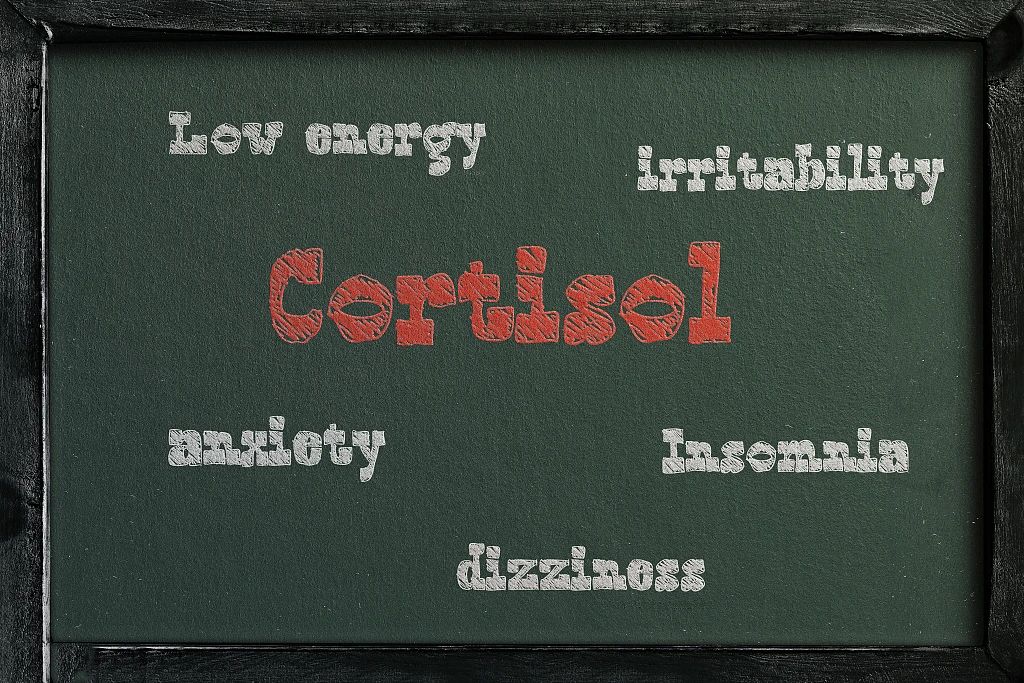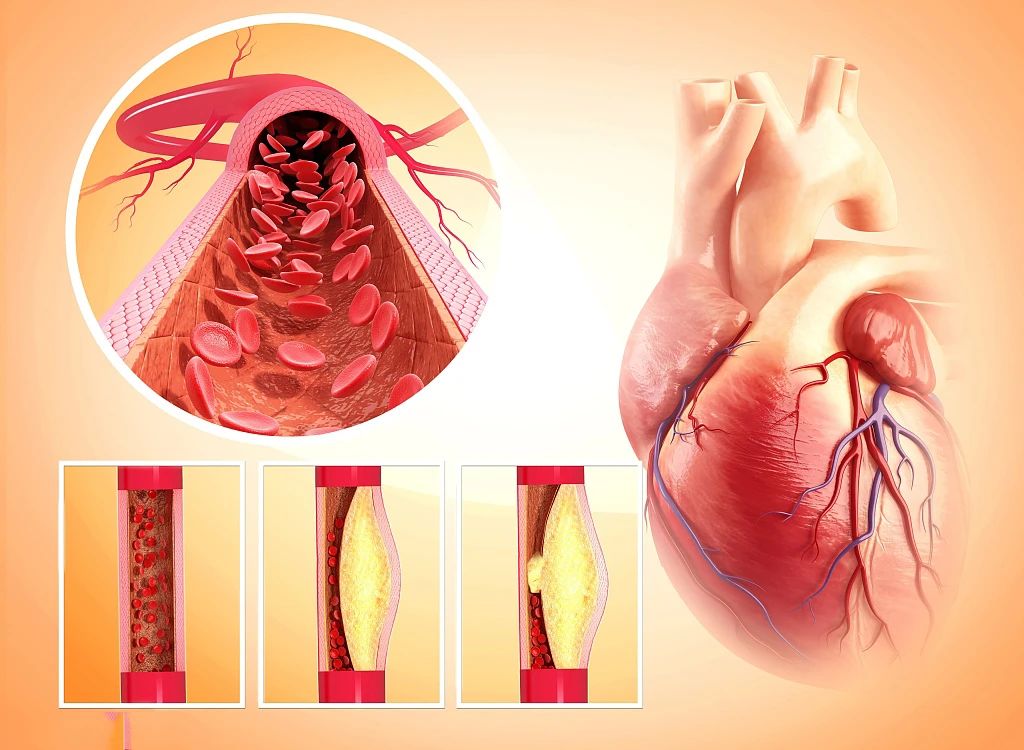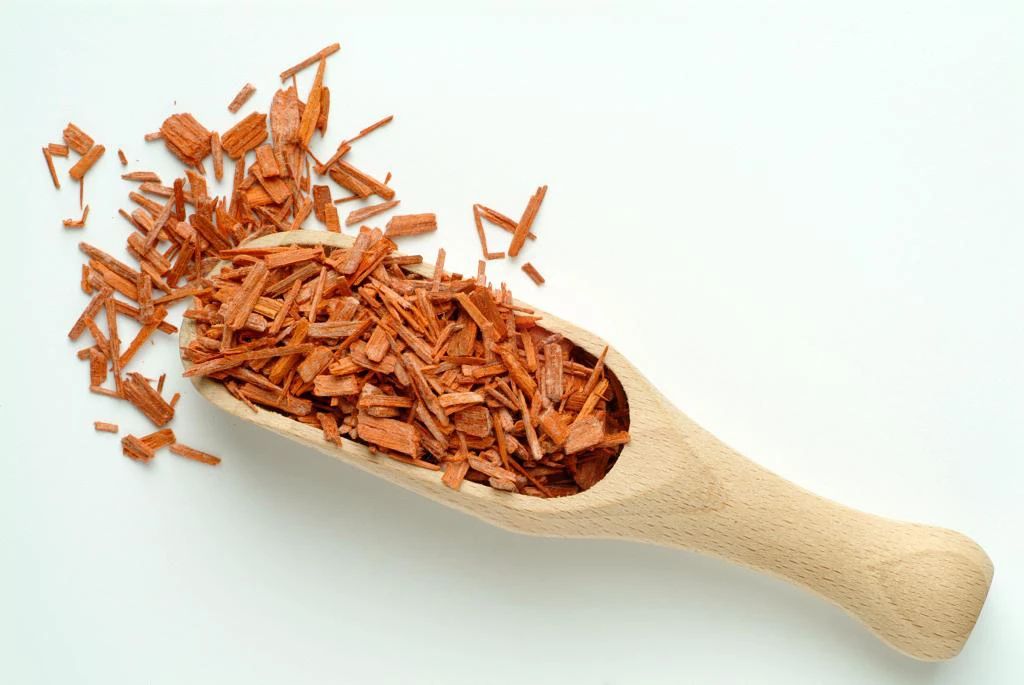慢性压力是如何削弱免疫功能的?
压力难以避免,令人担忧的是,压力增加会削弱免疫功能。
持续的压力会引发高水平的皮质醇,一种类固醇激素—过量的皮质醇会降低免疫功能,并已被证明会增加疾病风险,同时缩短人类寿命。
2019年的一项研究发现,预测第二天的压力与早上醒来后不久皮质醇升高有关。
人类研究表明,特定的植物提取物可以降低皮质醇水平并抑制其破坏作用。
压力削弱免疫功能
最近的一项民意调查显示,45%的美国人认为,由于对病毒性疾病的担忧和压力,他们的心理健康受到了负面影响。
皮质醇是人体主要的应激激素之一
在压力大的时候,肾上腺会释放它,作为“要么战斗,要么逃跑”反应的一部分。
皮质醇对生死攸关的情况是必要的,它会引导一系列复杂的荷尔蒙和生理变化,支持往安全地带逃离或抵御威胁。皮质醇能促进肌肉紧张、血糖、心跳、组织修复物质和精神集中。与此同时,皮质醇会降低非紧急过程,如免疫功能,以及消化和生殖系统。当压力威胁过去后,皮质醇就会恢复到正常的“平衡”水平。
当压力源总是存在时,皮质醇持续处于“开启状态”,它在血液中的持续高浓度存在会对身体和大脑的关键功能产生不利影响。
皮质醇升高的风险
压力导致淋巴细胞水平下降。这些免疫细胞被用来杀死病毒和其他入侵者。当一个人在对抗病毒感染时,淋巴细胞计数通常会减少。即使只是几天,社交孤立和孤独也会削弱免疫力。
老年人更容易受到压力和压力诱导的免疫损伤。长期过度暴露于过量的皮质醇会破坏身体生理反应,增加健康风险,包括:

•免疫损伤
•心血管疾病
•糖尿病
•骨质疏松症
•胃肠道问题
•肥胖
•神经变性(包括阿尔茨海默病,以及焦虑、抑郁和失眠)
皮质醇的长期升高与死亡率的增加有关
一项针对65岁以上人群的大型研究发现,皮质醇水平高的男性,死亡的可能性比皮质醇水平低的男性高63%。
皮质醇水平升高的女性,死亡的可能性比皮质醇水平低的女性高82%。而皮质醇水平高的女性死于心血管疾病的风险增加了五倍。
皮质醇升高也与端粒的缩短有关,端粒是覆盖染色体末端的DNA片段。随着端粒的缩短,携带端粒的细胞越来越接近生命的尽头,使它们所在的组织和器官老化。
要避免所有的压力是不可能的。但科学家已经证明,天然化合物可以降低过量的皮质醇水平。
压力对免疫的破坏作用
•压力会增加皮质醇水平,从而削弱免疫功能。
•免疫系统薄弱会增加病毒和其他病原体引起感染的风险。
•皮质醇长期升高会增加患其他疾病的风险,包括心血管疾病、糖尿病、神经退行性变和总体死亡率。

•人体研究表明,荔枝绿茶混合物和木兰树和黄柏树的两种树皮提取物的组合都能降低皮质醇水平。
•这些化合物可以有效减少不需要的循环皮质醇,安全地抑制其破坏性影响。
荔枝绿茶混合物降低皮质醇
自11世纪以来,41种荔枝在中国种植,富含多酚,可促进多种生物活性,尤其是降低炎症和皮质醇水平的能力。
如今销售的大多数荔枝产品都含有长链多酚,这些多酚不容易被肠道吸收。
为了克服这一障碍,科学家们开发了一种从荔枝果实和绿茶中提取的低分子量提取物。
其结果是一种新的化合物,该化合物是稳定的且高度可吸收的。
研究人员在人类单核细胞(一种免疫细胞)上测试了这种荔枝绿茶混合物。他们发现,它能显著抑制被称为细胞因子的炎症信号分子,有助于减少炎症。
这证实了早期临床试验的结果,这些试验评估了荔枝绿茶混合物降低压力和压力诱导的皮质醇的能力。
减少应激诱导的皮质醇
研究人员随机分配了19名久坐但健康的男性志愿者(平均年龄22岁),每天服用安慰剂或100毫克荔枝绿茶混合物,持续四周。他们在研究前后和运动后进行了皮质醇和其他炎症标志物的血液测试,这会提高皮质醇水平。与安慰剂组不同,服用该混合物的男性皮质醇和促炎细胞因子IL-1β和IL-6显著降低。荔枝绿茶提取物还降低了运动后这些因素的增加速度。
在另一项研究中,10名健康男性在低氧条件下锻炼前,每天两次服用安慰剂或100毫克荔枝绿茶混合物,持续10天,以增加压力。运动使安慰剂组的皮质醇显著增加,荔枝绿茶组的皮质醇升高幅度明显较小。
物理诱导的皮质醇
接下来,科学家们评估了荔枝绿茶混合物对皮质醇和身体压力引起的炎症的影响:
给13名健康男性服用安慰剂或100mg混合物。30分钟后,将每个人的腿部下部浸入热水中半小时。研究人员在手术前后测量了皮质醇和炎性细胞因子。与安慰剂受试者相比,荔枝绿茶受试者在热相关应激后皮质醇、IL-1β和IL-6的浓度显著降低。这些益处在压力结束后持续了长达两个小时。(IL-1β和IL-6是促炎因子)荔枝绿茶接受者在加热过程中皮肤和身体核心温度的升高也显著降低,这表明他们对身体压力事件的反应更加平衡和改善。
后来的研究证实,荔枝绿茶混合物可以防止热量引起的体温升高。这减少了在热应激下出汗造成的液体损失,并防止了应激引起的免疫反应迟钝。
如何衡量你的压力水平
压力会变得如此持续,以至于你甚至没有注意到自己的压力有多大。
皮质醇血液测试可以让你发现你的水平是否升高以及升高了多少。如果他们情绪高涨,那就是压力持续的迹象。冥想、锻炼和健康饮食等生活方式的改变可以降低这一水平。经常使用安全的植物化合物也可以降低皮质醇的升高,并可以防止压力导致的免疫减弱。
后续的皮质醇测试将显示你的努力是否成功或需要加强。
树皮提取物的作用

科学家已经鉴定出两种树皮提取物,它们对皮质醇升高具有类似的保护作用。
这些提取物来自一种木兰,厚朴和黄柏,也被称为阿穆尔软木树。
这两种药物在中医中已经使用了几个世纪,并被证明具有非镇静的抗焦虑作用。
在一项研究中,研究人员招募了56名健康但压力适中的个体。每天两次,给参与者服用安慰剂或250毫克含有两种树皮提取物的混合物。
四周后,树皮提取物受试者的皮质醇水平比安慰剂受试者低18%。他们的情绪也有所改善,压力、抑郁、愤怒和疲劳感减轻,所有这些都可能与皮质醇降低有关。
另外两项小型研究记录了这种树皮提取物混合物的好处:
•一项为期六周的研究针对健康但超重的绝经前女性(20-50岁),她们的焦虑程度高于平均水平。与安慰剂相比,每天三次服用250 mg的树皮提取物组合,可显著降低焦虑。
•第二项研究是对一组焦虑程度高于平均水平的女性进行的,她们报告说,为了应对压力,她们吃得更多。在为期六周的研究中,安慰剂组的体重显著增加。但树皮提取物受试者的体重增加被阻止了。皮质醇升高会削弱免疫系统抵抗感染的能力。荔枝绿茶混合物和树皮提取物的组合已被证明可以减少应激反应中过量的皮质醇分泌。
总结
压力通过提高皮质醇水平来削弱免疫功能。这增加了感染和慢性病的风险,缩短了寿命。
荔枝绿茶混合物提供了高度可吸收的营养物质,在人类研究中已被证明可以降低皮质醇。
在人体试验中,木兰树和黄柏树的两种树皮提取物的组合也被证明可以降低皮质醇,减少压力的外在表现。这些化合物提供了一种降低过量皮质醇水平的方法,这可能会抵消慢性压力造成的一些有害影响。
以上内容不用于治疗、诊断、治愈或预防任何疾病。
以上图片来自网络,本文旨在分享学习,如有侵权,请联系我们删除,谢谢!
如需转载,请联系我们客服。
参考文献
医学博士Gary Gonzalez于2022年5月进行了科学审查。作者:迈克尔·唐尼。
1.Duggal NA, Upton J, Phillips AC, et al. NK cell immunesenescence is increased by psychological but not physical stress in older adults associated with raised cortisol and reduced perforin expression. Age (Dordr). 2015 Feb;37(1):9748.
2.Noordam R, Gunn DA, Tomlin CC, et al. Cortisol serum levels in familial longevity and perceived age: the Leiden longevity study. Psychoneuroendocrinology. 2012 Oct;37(10):1669-75.
3.Vogelzangs N, Beekman AT, Milaneschi Y, et al. Urinary cortisol and six-year risk of all-cause and cardiovascular mortality. J Clin Endocrinol Metab. 2010 Nov;95(11):4959-64.
4.Hackett RA, Kivimaki M, Kumari M, et al. Diurnal Cortisol Patterns, Future Diabetes, and Impaired Glucose Metabolism in the Whitehall II Cohort Study. J Clin Endocrinol Metab. 2016 Feb;101(2):619-25.
5.Schoorlemmer RM, Peeters GM, van Schoor NM, et al. Relationships between cortisol level, mortality and chronic diseases in older persons. Clin Endocrinol (Oxf). 2009 Dec;71(6):779-86.
6.Cohen S, Janicki-Deverts D, Doyle WJ, et al. Chronic stress, glucocorticoid receptor resistance, inflammation, and disease risk. Proc Natl Acad Sci U S A. 2012 Apr 17;109(16):5995-9.
7.Notarianni E. Hypercortisolemia and glucocorticoid receptor-signaling insufficiency in Alzheimer’s disease initiation and development. Curr Alzheimer Res. 2013 Sep;10(7):714-31.
8.Popp J, Wolfsgruber S, Heuser I, et al. Cerebrospinal fluid cortisol and clinical disease progression in MCI and dementia of Alzheimer’s type. Neurobiol Aging. 2015 Feb;36(2):601-7.
9.Toledo JB, Toledo E, Weiner MW, et al. Cardiovascular risk factors, cortisol, and amyloid-beta deposition in Alzheimer’s Disease Neuroimaging Initiative. Alzheimers Dement. 2012 Nov;8(6):483-9.
10.Nielsen NR, Kristensen TS, Schnohr P, et al. Perceived stress and cause-specific mortality among men and women: results from a prospective cohort study. Am J Epidemiol. 2008 Sep 1;168(5):481-91; discussion 92-6.
11.Carroll BJ. Ageing, stress and the brain. Novartis Found Symp. 2002;242:26-36; discussion -45.
12.Wikgren M, Maripuu M, Karlsson T, et al. Short telomeres in depression and the general population are associated with a hypocortisolemic state. Biol Psychiatry. 2012 Feb 15;71(4):294-300.
13.Epel ES. Psychological and metabolic stress: a recipe for accelerated cellular aging? Hormones (Athens). 2009 Jan-Mar;8(1):7-22.
14.Kyrou I, Tsigos C. Chronic stress, visceral obesity and gonadal dysfunction. Hormones (Athens). 2008 Oct-Dec;7(4):287-93.
15.Azuma K, Adachi Y, Hayashi H, et al. Chronic Psychological Stress as a Risk Factor of Osteoporosis. J UOEH. 2015 Dec 1;37(4):245-53.
16.Kyrou I, Tsigos C. Stress mechanisms and metabolic complications. Horm Metab Res. 2007 Jun;39(6):430-8.
17.Schneiderman N, Ironson G, Siegel SD. Stress and health: psychological, behavioral, and biological determinants. Annu Rev Clin Psychol. 2005;1:607-28.
18.Kramer AC, Neubauer AB, Stoffel M, et al. Tomorrow’s gonna suck: Today’s stress anticipation predicts tomorrow’s post-awakening cortisol increase. Psychoneuroendocrinology. 2019 Aug;106:38-46.
19.Lee JB, Shin YO, Min YK, et al. The effect of Oligonol intake on cortisol and related cytokines in healthy young men. Nutr Res Pract. 2010 Jun;4(3):203-7.
20.Nagasawa J, Sugiyama K, Uchimaru J. Oxidative stress in hypobaric and normobaric hypoxia and antioxidant effect of Oligonol. Japan J Mountain Med. 2010;30:118-24.
21.Shin Y-O, Lee J-B, Min Y-K, et al. Effect of oligonol intake on cortisol and cytokines, and body temperature after leg immersion into hot water. Food Science and Biotechnology. 2011;20(3):659-63.
22.Kalman DS, Feldman S, Feldman R, et al. Effect of a proprietary Magnolia and Phellodendron extract on stress levels in healthy women: a pilot, double-blind, placebo-controlled clinical trial. Nutr J. 2008 Apr 21;7:11.
23.Talbott SM, Talbott JA, Pugh M. Effect of Magnolia officinalis and Phellodendron amurense (Relora(R)) on cortisol and psychological mood state in moderately stressed subjects. J Int Soc Sports Nutr. 2013 Aug 7;10(1):37.
24.Garrison R, Chambliss WG. Effect of a proprietary Magnolia and Phellodendron extract on weight management: a pilot, double-blind, placebo-controlled clinical trial. Altern Ther Health Med. 2006 Jan-Feb;12(1):50-4.
25.Available at: https://www.kff.org/health-reform/issue-brief/the-implications-of-covid-19-for-mental-health-and-substance-use/. Accessed April 30, 2020.
26.Available at: https://www.mayoclinic.org/healthy-lifestyle/stress-management/in-depth/stress/art-20046037. Accessed April 30, 2020.
27.Available at: https://www.health.harvard.edu/staying-healthy/understanding-the-stress-response. Accessed April 30, 2020.
28.Available at: https://www.ncbi.nlm.nih.gov/books/NBK538239/. Accessed April 30, 2020.
29.Available at: https://www.ncbi.nlm.nih.gov/books/NBK278995/. Accessed May 3, 2020.
30.Yaribeygi H, Panahi Y, Sahraei H, et al. The impact of stress on body function: A review. EXCLI J. 2017;16:1057-72.
31.Larosa DF, Orange JS. 1. Lymphocytes. J Allergy Clin Immunol. 2008 Feb;121(2 Suppl):S364-9; quiz S412.
32.Available at: https://www.ncbi.nlm.nih.gov/books/NBK8423/. Accessed May 5, 2020.
33.Pedersen SF, Ho YC. SARS-CoV-2: a storm is raging. J Clin Invest. 2020 May 1;130(5):2202-5.
34.Wang X, Xu W, Hu G, et al. SARS-CoV-2 infects T lymphocytes through its spike protein-mediated membrane fusion. Cell Mol Immunol. 2020 Apr 7:1-3.
35.Zhang JJ, Dong X, Cao YY, et al. Clinical characteristics of 140 patients infected with SARS-CoV-2 in Wuhan, China. Allergy. 2020 Feb 19.
36.Available at: https://www.apa.org/monitor/2019/05/ce-corner-isolation. Accessed April 30, 2020.
37.Available at: https://www.cdc.gov/coronavirus/2019-ncov/daily-life-coping/managing-stress-anxiety.html. Accessed April 29, 2020.
38.Available at: https://health.clevelandclinic.org/what-happens-when-your-immune-system-gets-stressed-out/. Accessed April 30, 2020.
39.Aulinas A, Ramirez MJ, Barahona MJ, et al. Telomeres and endocrine dysfunction of the adrenal and GH/IGF-1 axes. Clin Endocrinol (Oxf). 2013 Dec;79(6):751-9.
40.Tomiyama AJ, O’Donovan A, Lin J, et al. Does cellular aging relate to patterns of allostasis? An examination of basal and stress reactive HPA axis activity and telomere length. Physiol Behav. 2012 Apr 12;106(1):40-5.
41.Available at: https://hort.purdue.edu/newcrop/morton/lychee.html. Accessed April 30, 2020.
42.Available at: https://www.maypro.com/products/oligonol®. Accessed April 30, 2020.
43.Lee N, Shin MS, Kang Y, et al. Oligonol, a lychee fruit-derived low-molecular form of polyphenol mixture, suppresses inflammatory cytokine production from human monocytes. Hum Immunol. 2016 Jun;77(6):512-5.
44.Lee J, Shin Y, Murota H. Oligonol supplementation modulates plasma volume and osmolality and sweating after heat load in humans. J Med Food. 2015 May;18(5):578-83.
45.Lee JB, Shin YO. Oligonol supplementation affects leukocyte and immune cell counts after heat loading in humans. Nutrients. 2014 Jun 24;6(6):2466-77.
46.Lee JB, Shin YO. Beneficial effect of Oligonol supplementation on sweating response under heat stress in humans. Food Funct. 2014 Oct;5(10):2516-20.
47.Shin YO, Lee JB, Song YJ, et al. Oligonol supplementation attenuates body temperature and the circulating levels of prostaglandin E2 and cyclooxygenase-2 after heat stress in humans. J Med Food. 2013 Apr;16(4):318-23.


